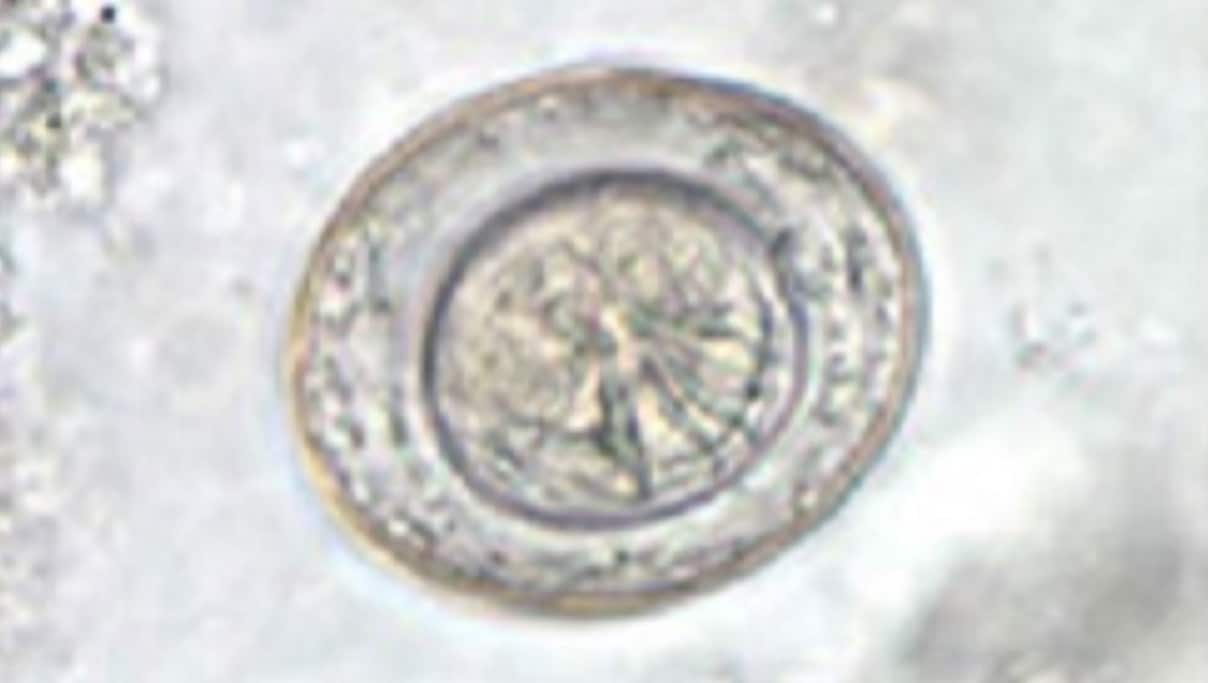Key points
- Hymenolepiasis is caused by a parasitic tapeworm, also known as the "dwarf tapeworm."
- A parasite is an organism (a living thing) that lives on or inside another organism.
- People can get dwarf tapeworm by consuming food or water contaminated by dwarf tapeworm eggs.
- Dwarf tapeworm occurs worldwide, most often in people living in areas with poor sanitation and people living in institutional settings.

Overview
Dwarf tapeworm (i.e., Hymenolepis nana) is a type of parasitic tapeworm. The infection occurs worldwide.
Adult dwarf tapeworms are very small compared to other tapeworms. They can be anywhere from 15 – 40 mm (up to 2 in.) in length. The adult dwarf tapeworm consists of many small parts called "proglottids." When the dwarf tapeworm matures in the intestine, these proglottids break off and people pass them in their stool (poop).
Adult dwarf tapeworms can live for 4 – 6 weeks.
Resource
Signs and symptoms
Most people infected with dwarf tapeworm do not have symptoms. When people do have symptoms, they can include one or more of the following:
- Nausea
- Weakness
- Loss of appetite
- Diarrhea
- Abdominal pain
Children, especially those with heavy infections (a high number of tapeworms) can have the following symptoms:
- Headache
- Itchy bottom
- Difficulty sleeping
At-risk populations
Dwarf tapeworm infections can occur worldwide. Infection is common among children, as well as people living in institutional settings, and those living in areas with unimproved sanitation facilities (when there is no sanitary separation of human waste from human contact).
How it spreads
People can get dwarf tapeworm infection when they accidentally consume dwarf tapeworm eggs. This can happen when people consume fecal (poop) contaminated food or water, often when people touch their mouths with unclean hands or eating something with contaminated soil. People can also become infected if they accidentally consume an infected insect (an intermediate host, such as a small beetle or mealworm) that can contaminate food you eat.
People can spread the infection to others. Dwarf tapeworm eggs are infectious, which means they can re-infect you or infect others immediately after they are shed in feces (poop).
Prevention
To avoid getting dwarf tapeworm infection, people should take the following steps:
- Wash your hands with warm water after using the toilet, changing diapers, and before preparing foods.
- Teach children the importance of handwashing to prevent infection.
- When traveling to countries where there is a higher risk of food contamination, wash, peel, or cook all raw vegetables and fruits with safe water (sanitized water, such as bottled, boiled, or filtered water) before eating.
See more on Handwashing.
Treatment and recovery
If diagnosed with dwarf tapeworm infection, a healthcare provider will treat you with praziquantel (the treatment of choice) or niclosamide or nitazoxanide (alternative drugs). These medications will cause the dwarf tapeworm to dissolve (break down) in the intestine. Depending on the infection, a person might have to have more than one treatment.
Niclosamide is not available in the US.
